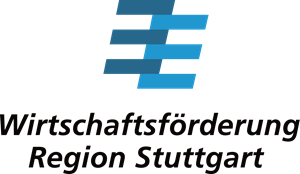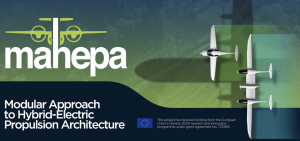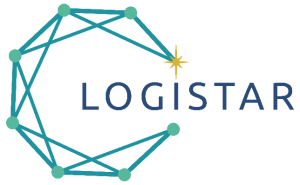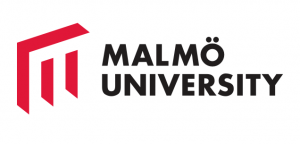The ST4W (Smart Track for Waterways) project is supported by the INTERREG NWE programme of the European Union. It aims at promoting and increasing the modal shift toward waterborne transport for shippers in NEW. Its particular focus is on palletized freight, thanks to a seamless synchronisation between supply chain stakeholders. It enables automatic traceability data acquisition, thus providing real flows visibility at any hierarchical level. That is, for individual pallets, for containers, and for the vessel as a whole.
In order to do so, ST4W proposes a management solution tool that will ease that modal shift by providing a simpler and cheaper access to secure data to small shippers, while enabling them to share a hierarchical track & trace service of shipment at a logistics unit level. It will work as a link to the existing tools of the River Information Services that localize vessels. These tools were tested, validated and rolled out during the project with the support of various partners (shippers, logistics operators, ship owners, ports and terminals, waterway administrations). This sustainable and closer cooperation between waterway actors and their supply chain partners should enable more clients to make use of waterway transportation, thus evolving from mental shift to modal shift.
INLAND WATERWAYS: ADVANTAGES AND OBSTACLES
Indeed, inland waterway transport (IWT for short) offers many advantages:
- It is cost effective, as the level of fuel consumption is rather low.
- It is eco-friendly, as it releases three times less CO2 /t than road transportation. As a reminder, one river convey is the equivalent of 220 trucks, hence drastically reducing pollution and costs.
- Furthermore, IWT is deemed safe and respectful of timelines.
- Finally, it facilitates access to dense urban areas.
So far, IWT has predominantly been used by large companies for bulk and big volumes. The aim is now to develop its use for palletized shipments as well and to extend its availability to small SMEs. Palletized freight is generally carried by road in small volumes, directly from point A to point B. It only represents 11.4% of inland waterway freight (source: Eurostat). Modal shift from road to waterway has not taken off because it has been impeded by IWT needs for additional transhipment operations, by
- the bundling of several small volumes,
- the more complex logistics engineering,
- the administrative burden it involves,
- the need for adapted vehicles and infrastructures for pallet handling,
- and also by the fact that heterogeneous data exchange between waterway stakeholders is either not integrated, complex or too expensive for SMEs.
In that respect, ST4W comes in as a breakthrough, as its hierarchical tracking data exchange platform allows to link data from fragmented sources, such as vessels and trucks geo-localisation, the last known location of logistics units and also the successive cargo tracking in multimodal environment. In other words: What pallet is in what vessel, in which truck? ST4W facilitates the sharing of standardized and secure information between chosen partners only and ensures that everyone is master of his own data. It offers real time follow-up of shipments, hence allowing end-to-end, seamless visibility and synchronisation between logistics and IWT actors. Finally, it allows tackling the modal shifts impediments mentioned above by offering multi- stops and multi-client vessels.
In order to assess ST4W’s results, 3 pilot projects were hosted in the partners’ regions, showing a better synchronisation between inland waterway operators and including cooperation across geographical frontiers, hence fostering SMEs to make use of this kind of transportation, and consequently reducing their carbon footprint.
The ST4W tool could be used for many kinds of goods and transport organisations. It included a multi-stop/multi-client scenario bundling volumes and initiating a waterway shuttle, stopping at several short-haul operators, loading and unloading a couple of pallets at each step. ST4W tools provide a simpler and cheaper access to secure data to small stakeholder, and enable them to share a hierarchical track & trace service of shipment in real time.
UNIFIED DATA PLATFORM
Thanks to a collaboration with different other stakeholders (in particular Port of Brussels, PACO, Blue Line Logistics, Roosens Bétons, Gobert Matériaux, Knauf and MPRO), an accurate synchronisation between supply chain operators pilot was implemented thanks to a hierarchical tracking system, enabling new logistics services such as trans-shipment between two vessels operators. A Cloud-oriented platform, based on GS1 standards, provided supply chain stakeholders with an easy access to unified tracking data. This is thanks to an automatic update of logistics unit status (pallet, container…) at each step of a multimodal voyage, offering an automatic alert in the case of delay or loading the wrong logistics unit. It is a first step towards real-time update of Estimated Time of Arrival of each logistics unit, throughout the multimodal supply chain.
PALLETS TO PARIS
A second pilot project showed the positive impact of bringing goods into dense urban areas by river mode, thus avoiding trucks in the Paris area. This modal shift was made with collaborative multimodal logistics operations, and the digital interconnection was effective thanks to ST4W tools. As far as the physical interconnection was concerned, it was facilitated by innovative transshipment concepts such as the FlexiMalle, a light and hard-wearing multimodal container designed by Sogestran, complying with handling industry standards which can be tracked from end to end along the multimodal journey with the ST4W hierarchical tracking system.
A solution such as ST4W that tracks the goods across the supply chain (what, where, with whom and when) thanks to the automation and simplification of customs procedures, can help complying with the customs declaration. This is in particular true at export (where clearance must be done within 60+30 days) or during suspensive procedures such as transit (with clearance between 2 and 30 days).
PROLONGED PROJECT SUPPORTS URBAN LOGISTICS
The running of these pilots in ST4W proved the interest in these tools, particularly in dense urban zones. So the project was prolonged in the frame of the Interreg “Cap Call initiative”. The objective is to improve the connection between inland waterway transport and multimodal last-mile logistics; firstly digitally thanks to the ST4W tool, and secondly physically thanks to innovative transhipments and vessels.
The project now targets new stakeholders (e.g. city logistics operators, urban planners, PPP & funding), generates new opportunities for IWT value chain, with new partners (e.g.POLIS), and results from other INTERREG projects (e.g. IWTS2.0, CCP21).Test-beds will include Paris, Lille, Liege, Brussels and Ghent.
The initiative will enable digital interconnection; ST4W tool will be used for synchronization and allow data exchange between IWT and urban logistics tracking systems. It will facilitate resource booking shared planning (urban quays, vessels, HR, etc.), management of multi-products & multi-clients operations and performance data monitoring (loading/unloading time, etc.) It will also improve physical interconnection by using innovative vessels and transhipment (FlexiMalle, GreenWave, Zulu).
In order to better connect IWT with dense urban areas, last-mile logistics will be operated by eco-friendly cargo-bikes. IWT appears all the more profitable as it implies circular logistics. Construction materials, light furniture, e-commerce items will be shipped on inbound flows, and urban wastes, cardboard from shops, mattresses will be transported on outbound flows.
THE PARTNERSHIP

The project, financed by the INTERREG North-West programme, involved five pilot cities (Paris, Lille, Liège, Brussels and Ghent), four transnational organisations (POLIS, INE, EFIP and GS1) and further partners from France, Belgium, the Netherlands, Germany and the United Kingdom. It included
- Ports: Brussels, Lille and Paris.
- Ship owners: Sogestran (FR), Blue Line Logistics (BE), Urban Waterway Logistics (BE).
- Logistics operators: Urby (FR), Shipit (BE), Paris Terminal (FR).
- Shippers: Bockaert & Thienpont (BE).
- IT experts: Inlecom (UK) and IT-Optics (BE).
- Research centres and Universities: Multitel (BE), Circoé, IDIT, (FR), TUL UDE (DE), Maritieme Academie Harligen (NL):
- Clusters: Logistics in Wallonia (BE), Chambre de Commerce et d’Industrie de Région Hauts-de-France (FR).
- EU regional stakeholders: POLIS (EU).

Claire Bouvier
Project Manager, CIRCOÉ
Share this article in your social media
Although we ensured to have up-to-date and accurate information, the publisher OPEN ENLoCC, nor the editor and the author, are not liable for errors and omissions. The publisher and the editor did not test products or services described and their inclusion does not imply any form of endorsement. By accepting advertisements in this publication, the publisher does not warrant their accuracy, nor accept responsibility for their contents. The publisher welcomes unsolicited manuscripts and illustrations but can accept no liability for their safe return. Reproduction (in whole or in part) of any text, photograph or illustration contained in this publication without the written permission of the publisher is strictly prohibited.
© 2022 OPEN ENLoCC All rights reserved.
 The publication of the European Review of Regional Logistics is supported by a grant of Wirtschaftsförderung Region Stuttgart GmbH (WRS).
The publication of the European Review of Regional Logistics is supported by a grant of Wirtschaftsförderung Region Stuttgart GmbH (WRS).
European regional review, Issue 2022/1
Other articles in this issue

Stuttgart Region’s position on hydrogen
Interview with Dr. Walter Rogg, head of the regional economic development corporation WRS Sehr geehrter Herr Dr. Rogg,With combustion engines on the way out, why
ST4W: Data flows for smart waterways
The ST4W (Smart Track for Waterways) project is supported by the INTERREG NWE programme of the European Union. It aims at promoting and increasing the
SMART-CORRIDORS project
Smart Supply Chain and Intelligent Intermodal Corridor Management for the China-Europe land-sea express line.” Recent research and business practice pinpoint that the integration of new
Promoting Hydrogen in Valencia
On 13 October 2021, the “H2VLC Valencia Hydrogen Valley” project was presented at the Valencia City Council headquarters, with the participation of more than 40

MAHEPA: Towards environmentally friendly hybrid-electric short haul air transportation
The Challenge The future competitiveness of the aviation sector largely depends on its environmental footprint. With the aviation industry responsible for 2 % of all

LOGISTAR – transport operations by horizontal collaboration, relying on real-time data
The LOGISTAR objective is to allow effective planning and optimizing of transport operations in the supply chain by taking advantage of horizontal collaboration, relying on
Hydrogen for transport in Stuttgart Region
Why is hydrogen a topic in Stuttgart Region? Stuttgart Region is a high-density area in the center of Europe. Its 2.8 million inhabitants rely heavily

FEDeRATED: a viable network of platforms for data sharing in freight transport and logistics
On 24th of November 2021 the Mid Term Review meeting of the FEDeRATED project was held at the Codognotto headquarters in Salgareda (Italy). The project

A relational business model of e-logistics facilities
“How come logistics operators’ return on investments is so low despite that warehouse operations are very cost efficient?”, is a strategic question that I and
19th European Transport Congress of the EPTS Foundation e. V. held in Maribor
On 7 and 8 October 2021, the University of Maribor hosted the international scientific congress “European Green Deal – Challenges and Solutions for Mobility and

Stuttgart Region’s position on hydrogen
Interview with Dr. Walter Rogg, head of the regional economic development corporation WRS Sehr geehrter Herr Dr. Rogg,With combustion engines on the way out, why
ST4W: Data flows for smart waterways
The ST4W (Smart Track for Waterways) project is supported by the INTERREG NWE programme of the European Union. It aims at promoting and increasing the
SMART-CORRIDORS project
Smart Supply Chain and Intelligent Intermodal Corridor Management for the China-Europe land-sea express line.” Recent research and business practice pinpoint that the integration of new
Promoting Hydrogen in Valencia
On 13 October 2021, the “H2VLC Valencia Hydrogen Valley” project was presented at the Valencia City Council headquarters, with the participation of more than 40

MAHEPA: Towards environmentally friendly hybrid-electric short haul air transportation
The Challenge The future competitiveness of the aviation sector largely depends on its environmental footprint. With the aviation industry responsible for 2 % of all

LOGISTAR – transport operations by horizontal collaboration, relying on real-time data
The LOGISTAR objective is to allow effective planning and optimizing of transport operations in the supply chain by taking advantage of horizontal collaboration, relying on
Hydrogen for transport in Stuttgart Region
Why is hydrogen a topic in Stuttgart Region? Stuttgart Region is a high-density area in the center of Europe. Its 2.8 million inhabitants rely heavily

FEDeRATED: a viable network of platforms for data sharing in freight transport and logistics
On 24th of November 2021 the Mid Term Review meeting of the FEDeRATED project was held at the Codognotto headquarters in Salgareda (Italy). The project

A relational business model of e-logistics facilities
“How come logistics operators’ return on investments is so low despite that warehouse operations are very cost efficient?”, is a strategic question that I and
19th European Transport Congress of the EPTS Foundation e. V. held in Maribor
On 7 and 8 October 2021, the University of Maribor hosted the international scientific congress “European Green Deal – Challenges and Solutions for Mobility and